Leland Stanford Junior University Football Offensive Preview
Cal makes Palo Alto their home this Saturday in the 126th edition of the Big Game.
If you’re familiar with my articles, you know that I usually write a sarcastic hit piece during Big Game week, talking about how great Stanford is while showing clips that prove otherwise. But out of respect for our ACC brethren, I am not going to do that this year. And with good reason:
Stanford is the reason we are in a real conference and not part of the Pac-3.
Without commenting on the situation with Cal’s administration (you, a seasoned Cal fan, can read between the lines), reports were that Stanford was the one that really drove negotiations with the ACC and secured us a spot in a power conference. For that, I am grateful. In these tumultuous times of conference realignment where greedy TV execs rule the college football landscape, rivals have turned to allies all over the country: Stanford (and Notre Dame) helped Cal into the ACC, Oregon helped bring Washington to the B1G (B2G?), and USC dragged UCLA’s worthless program along with them as well.
(I am not convinced that last one was out of benevolence or desire to keep rivalry games; I don’t believe USC cares about anything more than money, and dragging UCLA along prevented any other conference from gaining a foothold in the LA TV market (not that anyone cares to watch UCLA games in LA), which only helped cement the death of the Pac-12.)
It’s times like these that help us realize who the real enemies are. Stanford is our rival and I respect them. USC, UCLA, FOX… not so much. As much as I am disappointed for the death of the Pacific Conference, I am grateful that we have one college football tradition that will continue (at least until the TV Networks realize they overpaid for teams like USC and need to cut costs, triggering another round of realignment where they trim the Rutgers and Indianas out of the semi-pro “power” conferences).
So thank you, Stanford.
Now that I have that out of the way, let’s go over all the reasons that Stanford sucks and I hate them.
There are a lot of pressing questions about this Stanford team. Chief among them: is Stanford wide receiver Tiger Bachmeier named after the illustrious Stanford grad, renowned serial philander Tiger Woods? No one can say for certain.
As you’ve probably heard by now, Stanford is led former Cal quarterback great, Troy Taylor. I know there are Cal fans out there who would have liked to see Troy Taylor at the helm of this Cal team.
If there’s one thing I know about Troy Taylor, it’s that he is going to slav squat the whole goddamn game. Either that or stare at the ground in dejected disappointment.

There’s a lot to cover, so let’s get into it.
Troy Taylor
Stanford is a differently coached team, and they’re so unorthodox here that I felt that we needed a special section just to briefly address this. At Sacramento State, Troy Taylor helped lead the team to a school-record streak of regular season wins—a fact mentioned in the broadcast graphics for both Troy Taylor and for Sac State’s new head coach when the two teams played each other earlier in the season… and in fact, Sacramento State actually won its school-record 22nd straight regular season game at Taylor's expense, handing Stanford its second loss ever to an FCS school. The last team to beat Sac State in the regular season? It was when they gave Cal a hell of a game in 2021, with Cal escaping with a 42-30 win.
When you’re at an FCS school and you’re up against a far more talented FBS team, you have to get creative. You scheme up all sorts of trick plays to try and catch the defense off-guard, you run an unorthodox offense that makes it difficult to prepare for (say, a 2-QB system with both QBs heavily involved in the offense, even at the same time), and so on. Stanford is heavily reliant on the trick play to move the ball on offense, and to their credit, there are certainly very creative plays I’ve never seen before. Take the following play, for instance, which I’m still not sure if it was actually schemed up this way. Washington is clearly confused on defense; they have 12 men on the field and basically no one in the box to defend the run (this may have been somewhat intentional on UW’s part; sometimes you want to bait the opponent into running the ball when you have a plan to defend it, but with 12 men on the field, it’s clear that not all the UW defenders are where they are supposed to be). Stanford quickly snaps the ball to run it up the middle, but the rest of the offensive linemen not moving (something you do when you’re trying to draw the refs’ attention to an offsides or another penalty) is brilliant. Washington is a step behind as a result, and Stanford runs it up the middle for the easy touchdown:

Stanford’s problem—trick play or not—is just a failure to execute. Here’s yet another perfect play call, but WR Tiger Bachmeier evidently lacks the QB skills of his brothers (Hank and Bear), and his soft throw, while catchable, is dropped:

Stanford is going to run a lot of trick plays; for instance, they are particularly fond of the flea flicker. But Troy Taylor can get really creative with play designs to the point where it feels like Stanford is outsmarting itself. For instance, here’s a play where the quarterback Ashton Daniels forces a throw into triple coverage for… the other quarterback (who lined up as a receiver on the play), Justin Lamson. Of course, you probably shouldn’t expect your backup quarterback to have the receiver skills to make a catch in triple coverage (and you should also expect your first-string quarterback to have enough sense to throw it away when he sees his QB-WR triple covered):
I’m sure there was a reason Stanford drew up this play—perhaps they thought the defense would adjust in a certain way after all the double pass plays Stanford had set up earlier in the season from QB to QB, but whatever they were hoping for was obviously not there. It’s the sort of play you wouldn’t blame an FCS school for running against an FBS school with an overwhelming talent advantage, but it’s another thing when you have to treat a conference opponent this way. Oregon State is a well-coached team, but Stanford should at least be on par talent-wise with Oregon State. They’re not Georgia or Alabama or Ohio State or whoever else. Although the trick plays make good highlights, Stanford is unable to execute just a basic offense well. Simple run plays are not simple. Stanford’s talented receivers consistently struggle to get open (sometimes a matter of skill, but also a matter of scheme). Stanford can’t run a vanilla offense if their life depended on it, which is how you end up getting outclassed by your old FCS squad and your former assistant coaches. In the one game that Stanford had a clear talent advantage, they couldn’t do anything with it. Calling plays like it’s a game of Madden might get you an upset or two (or at least close, like the weirdly competitive games against Arizona and Washington). But it’s also not sustainable, which is how you get blown out in a 46-point loss to an awful USC team, a 36-point loss to Oregon, a 45-point loss to Oregon State, a loss to an FCS team, and so on. Of course, it’s the Big Game, and if there were one game where you’d break out all the tricks and surprises, it’d be this one. You’re going to need all sorts of tricks and surprises in order to pull an upset. It’s the one game of the year where fans will overlook the rest of the résumé for if you managed to do so. But how many tricks can you still have up your sleeve after an entire season of them?
Quarterback
Like Troy Taylor did at Sacramento State, Stanford relies on a multi-QB system. Although some teams in the Pac-12 have designated run-first QBs (say, UCLA’s Collin Schlee or Washington State’s John Mateer—at least outside of garbage time/injury relief), Stanford will use both quarterbacks in both pass and run situations. That said, Stanford does use QB Ashton Daniels more in passing situations, and QB Justin Lamson will be used more in run situations (e.g. 3rd and 13 is likely Daniels, whereas 3rd and 1 is probably Lamson). Stanford will freely rotate between the two quarterbacks mid-drive, and will sometimes even put them on the field together. Lamson is tied with USC RB MarShawn Lloyd for 8th in the conference in number of rushing attempts, while Daniels sits at #16 (Stanford doesn’t have an RB appear on the list until #24). It’s clear that no team in the conference relies as heavily on their quarterback(s) in the run game more than Stanford does.
As a quick injury note, Ashton Daniels had his left wrist taped up last week against Oregon State and took a helmet hit right on that non-throwing wrist during a quarterback scramble, and is thus currently listed as questionable. Given that it’s his non-throwing hand, I have to assume that he’ll play through the pain for the Big Game. Stanford’s offense has really sputtered in games where one quarterback was not available due to injury, so I imagine they have to keep that QB rotation going.
Let’s start with the “passing QB”, Daniels. One thing I like about Daniels is that even though he is young, he does a good job of working through his progressions, as most young QBs tend to lock on and stare down their favorite target:
Daniels has also shown a lot of improvement in the passing game since last year. He’s shown some great touch on his throws at times:
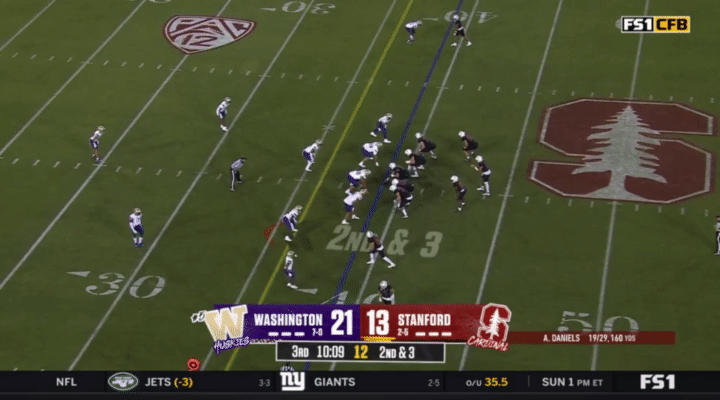
And here he puts great placement on this throw:
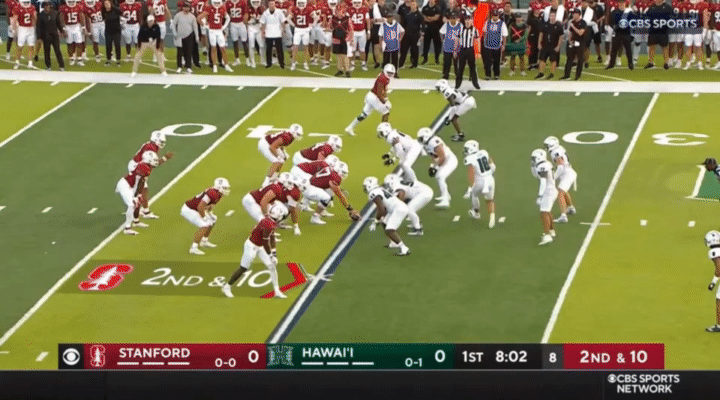
(As a side note, Stanford likes the above play a lot). Another strength of Daniels is ability to move in the pocket. He does a good job of sensing pressure and doesn’t bail from the pocket too early (another common issue with young QBs that can scramble, where sensing pressure means “run”):

He does a good job of buying time in the pocket and keeps his eyes downfield:

Daniels has also shown a penchant for throwing the ball off-balance or on the run, and generally still makes good throws while off-platform:
Although he is a pass-first QB, Daniels does have the ability to run the ball and will pick up chunks of yards on scrambles:
Given the improvement Ashton Daniels has made since last year and the mistakes he avoids (e.g. staring down receivers, panicking in the pocket, etc.), it seems clear to me that Daniels has received good quarterback coaching at Stanford.
However, that’s not to say that he’s without flaws. One of his biggest flaws is when he tries too hard to make something happen, and he forces a throw instead of throwing the ball away. For example, he almost cost Stanford the game with this throw:
The pass fell incomplete and this drive ultimately led to the game-winning field goal for Stanford, but it’s easy to see how this game could have gone another way.
Although Daniels is above-average under pressure, the lack of consistent mechanics (common amongst QBs that like to rely on arm strength or their upper body to make throws) means that sometimes his throws can sail high:
I assume the following was a miscommunication, but I have no idea where he was going with this:
I think Daniels other biggest flaw is his overreliance on his star receiver to make plays. You can see where the faith in Elic Ayomanor comes from in the receiver section below, but sometimes Daniels is trying to force throws to his contested catch specialist that he should not be making:
Here he does it again just a few minutes later:
To be fair to Daniels, Oregon State did a great job covering Stanford’s receivers and they struggled to gain separation. But it’s also clear that OSU knew Daniels wanted to throw it in Ayomanor’s direction, and decided to double team him, ultimately leading to 4 interceptions in that game (3 of them intended for Ayomanor).
The other quarterback is the “running QB” Justin Lamson, although with 82 pass attempts and 108 carries, I’d say he’s only marginally more likely to run the ball. Given that Daniels was hurt on a run last week, I would assume Daniels may be more reluctant in running situations, and so perhaps Lamson will run the ball a bit more often as a result.
Lamson is pretty good running the ball, and here he even takes the handoff from Daniels:
As you can see, Stanford is hoping to leverage their two quarterback situation to find holes in the defense—Stanford loves the double pass play, and defenses need to stay disciplined in coverage when the “running back” may very well throw the ball—but conversely, that may make running the ball easier if e.g. a safety stays in pass coverage instead of run support. Again, Stanford’s offense has stalled when one of their QBs went down, as they weren’t very efficient in basic pass or run plays. Stanford often relies on gimmicky plays to move the ball on offense.
Although Daniels is mobile, Lamson is harder to stop in the run game. He’s fast, and he’ll lower a shoulder and run through contact if need be. Here an example where he escapes pressure to scramble for a first down:
Even though Lamson is often brought in to run the ball, he does have a good arm as well. Here he makes a nice throw on the flea flicker (QB Ashton Daniels hands it off to WR Tiger Bachmeier, who flips it back to QB Justin Lamson who was lined up as a receiver:

Here’s another example without so much window dressing, where Lamson shows off some nice arm strength and accuracy as he hits his receiver in stride down the sideline:
Perhaps because Stanford is often playing from behind and always desperate for some signs of life on offense, Lamson is also guilty of trying to force throws into bad situations:
In the following play, I’m not sure if Ayomanor or Bachmeier is the intended receiver (Ayomanor is clearly covered, but Bachmeier may have been open on the comeback route), but this is why it’s generally a bad play design idea to run two receivers to the same spot:
Both of Stanford’s quarterbacks are well-coached, but they will probably struggle to clean up these kinds of mistakes until Stanford can get a better run game and not play from behind so often. It’s understandable that Stanford’s quarterbacks make mistakes in “gunslinger mode”, but that’s often the only choice you have when you’re (check notes) down 38 points in the 3rd quarter. If Cal can get a nice lead on Stanford, it will likely lead to more mistakes on Stanford’s part. Sure, Stanford came from behind against Colorado, but that was a failure on Colorado’s part more than anything else.
Running back
Stanford has not been particularly strong in the running game this season. Its top two rushers this season are both quarterbacks, Justin Lamson (108 carries for 246 yards) and Ashton Daniels (87 carries for 228 yards). For comparison, that means that Stanford has spent ten games this season accumulating the yards of roughly one Jaydn Ott game. Stanford can probably attribute the weak running game to injuries. Their top running back, Casey Filkins, is currently listed as questionable with an injury. His last game was 3 weeks ago against Washington, but he hasn’t received meaningful playing time since week 3 of the season against Sacramento State. Their other top running back is EJ Smith—the son of NFL Hall of Fame RB Emmitt Smith—but he honestly hasn’t looked the same since his gruesome season-ending injury he suffered early last season. I was a big fan of his when he burst onto the scene as a freshman back in 2021, and so I am genuinely sad that he probably hasn’t lived up to his potential due to injuries.
Although the vast majority of the carries will be by Stanford quarterbacks, I figure I should cover the running backs here. Seriously though: 187 of 359 carries (52%) were by a QB, while 126 carries (35%) were by a RB (the other ~13% of carries were by receivers, generally on a jet sweep or a reverse, etc).
Although Filkins is questionable, I’m going to default to assuming every player will fight through injury to play in the Big Game. To be quite honest, Filkins is an average back, with decent (but not breakaway) speed:
Most of Filkins stats were accumulated against terrible defenses (e.g. Hawaii and USC, where even FCS Sacramento State put up more of a fight on defense), but nevertheless, Filkins is generally able to pick up yards when he gets good run blocking:
Filkins’s real value is in the passing game, where he is a legitimate receiving threat:
Speaking of receiving threats, RB EJ Smith is also fairly good in the receiving game, although he’s been most often used as a checkdown when the Stanford offensive line struggles with pressure (which is a lot). As a result of Smith’s injury, I feel like he’s lost a lot of his lateral explosiveness and shiftiness he had his freshman year, but Smith does still have good acceleration and straight0line speed:
Despite the injuries, though, he still makes some pretty nice cuts:
Receiving more playing time in recent weeks is the freshman running back Sedrick Irvin (like EJ Smith, Irvin’s dad, Sedrick Irvin Sr., was also an NFL running back). Irvin is a smaller and shiftier back than the others, but he has shown some nice balance and an ability to fight through contact:
There’s also the big power back, Ryan Butler, but Stanford generally runs QB Power in short yardage situations.
Receivers
Stanford, for whatever reason, generally has talented receivers. The surprise standout receiver this year is Elic Ayomanor, the redshirt freshman who received national attention after posting an absurd 294 receiving yards—a Stanford school record—against Colorado.
The Colorado defense was utterly perplexed by an incredibly complex route known as the “inside slant,” which Stanford decided to run over and over and over en route to a comeback victory after being down 29-0 at halftime. Here he showcases his speed as his jab step jukes the corner into the turf:
Here Ayomanor runs a nice route to shake Colorado’s star corner, Travis Hunter:
Ayomanor has good straight-line speed (although not extremely explosive acceleration), but where he really shines is with his large catch radius and ability to make contested catches. Here he makes a nice adjustment to the ball in the air as he literally shakes off the corner:
Ayomanor shows strong hands and toughness, and here he fights through defensive pass interference to make the catch anyway:
Speaking of contested catches, no highlight reel would be complete without the ridiculous catch he made off the back of Travis Hunter’s helmet in overtime:
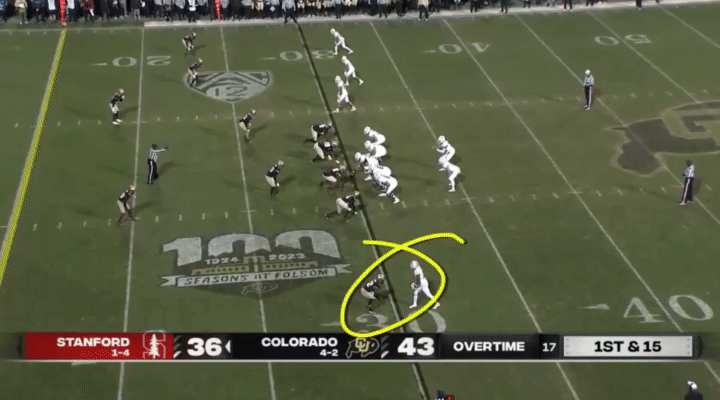
On the other side of the field is another promising (true) freshman receiver, Tiger Bachmeier. I was impressed back when I watched his recruiting tape when I saw that he was interested in Cal, and so I was a bit disappointed when he committed to Stanford. But hey, everyone makes mistakes. Like Ayomanor, Bachmeier also has a big catch radius and shows great body control in the air:
Bachmeier has very good hands and does a good job of bailing out his quarterback, making tough catches against tight coverage. If this doesn’t clip doesn’t scream “good hand(s)”, I don’t know what does:
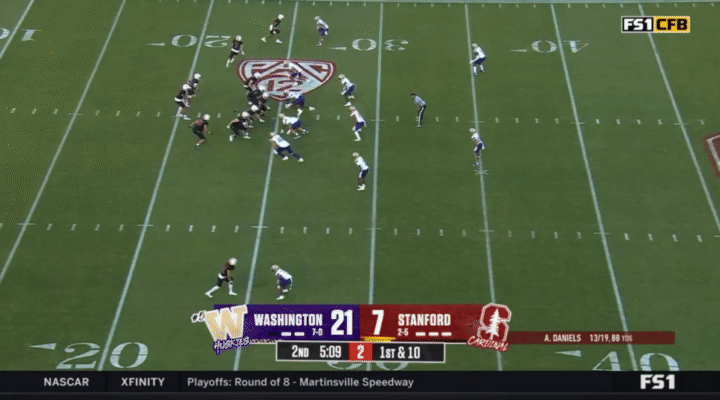
In the slot is the receiver Bryce Farrell. Farrell is often used in the run game (jet sweeps, etc) due to his speed and shiftiness, but he can also run a nice route:
However, there’s also been moments like… whatever this is:
Stanford’s top returning receiver is the tight end, Benjamin Yurosek, who was one of Philadelphia Eagles' QB Tanner McKee’s favorite targets at Stanford. Yurosek has been out for the past month with an injury and is listed as questionable for Saturday, but I felt I had to cover him here. Yurosek is an excellent receiver with NFL potential, although he’ll definitely need to improve in the blocking game if he wants to play at the next level.
Like many of Stanford’s receivers, Yurosek is another great route runner, with strong hands and contested catch ability. Last year, he was almost always the go-to possession receiver when Stanford needed to convert, although it’s not clear if Yurosek has that same level of chemistry with the new starting quarterback(s).
Here Yurosek makes a nice catch over the DB:
Yurosek has also been used a bit in the run game, as Stanford biggest and strongest running back is probably also a quarterback:
Another player I am surprised we haven’t seen much of this year is WR Mudia Reuben. I thought he’d be poised for a breakout season this year, but he hasn’t received all too many targets this year. Not really sure what happened to him, but I guess it’s a testament to the depth of talent that Stanford has in the receivers’ room.
Conclusion
Cal’s bowl hopes are still alive with a win against Stanford. If there’s one thing I can be sure of, it’s probably that this game is going to be weird. How so, I’m not sure. Maybe after I spoke at length about how Stanford can’t run a vanilla offense, Troy Taylor will summon the ghost of David Shaw and just hammer out 3-4 yard runs every play from the power-I formation. Maybe Troy Taylor will try to recreate The Play on the opening kickoff (here’s an idea: he could call it “The Revenge”). I have no idea what will happen. It’s also worth pointing out that Stanford has not won a single home game this season, with all 3 of Stanford’s victories coming on the road. The fact that Palo Alto will be decked out in Blue and Gold will help Stanford pretend that this is an away game, which should work in their favor.
I suspect Stanford’s defensive line will get pressure, and I expect Jaydn Ott will have another huge game anyway. As much as I would like Fernando Mendoza to become another Big Game hero (so that everyone will treat Fernando the way he treats everyone else), I hope he doesn’t need to be, because Cal cruises to a 63-0 victory (although I think this boomerangs back around into ‘hero’ territory). I want Cal to win by so many points that Troy Taylor is accused of being a double agent. I think the Cal offense will be moderately successful, while I have no idea what will happen between the Stanford offense and Cal defense. I hope they’re prepared for anything. I will be.
As always,


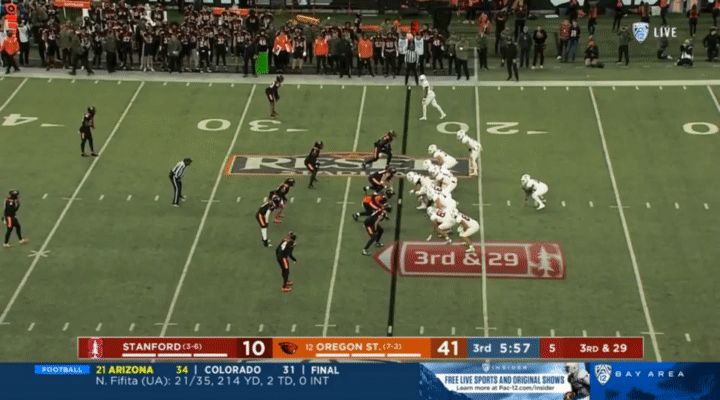
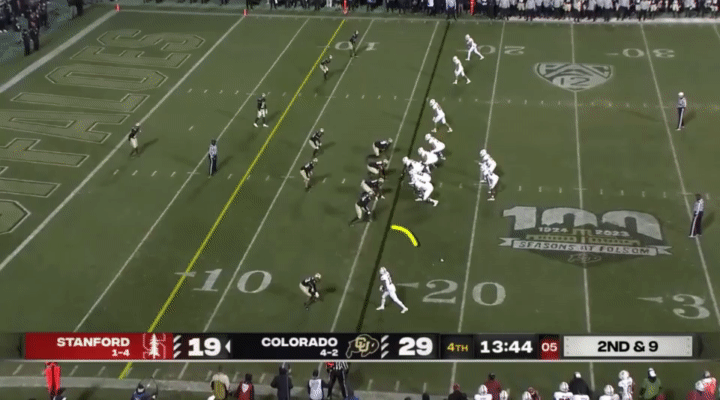
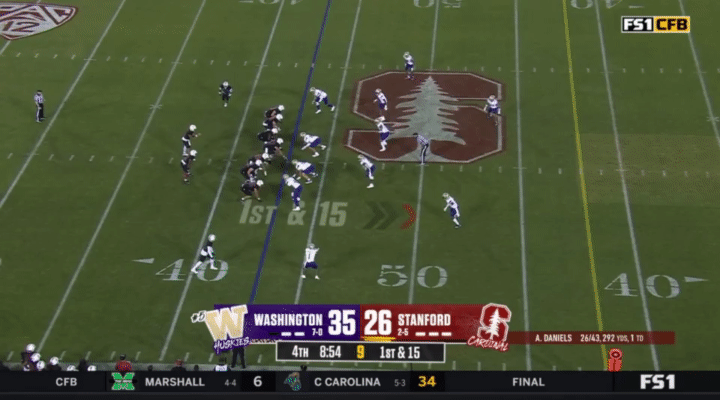


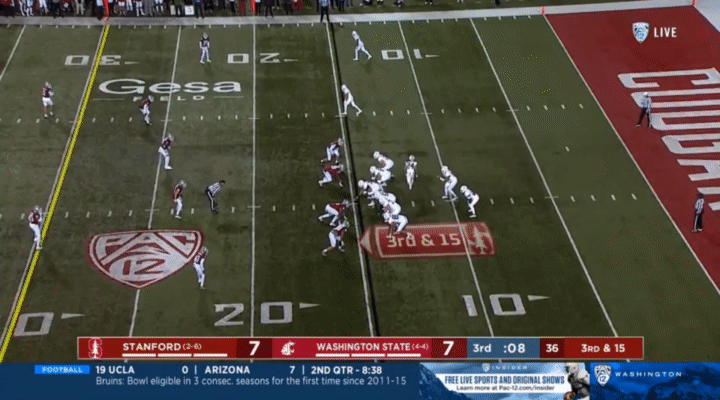
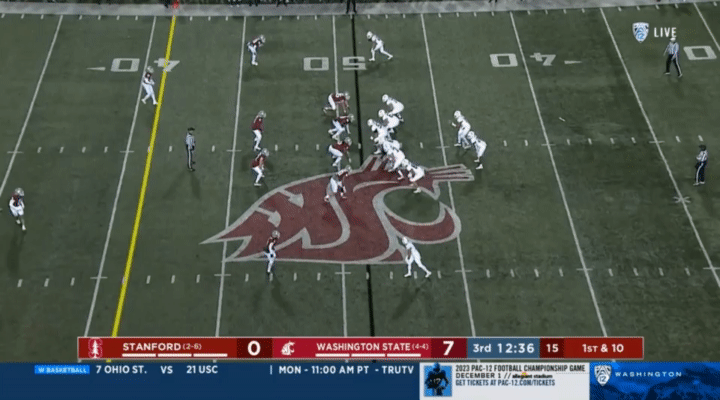






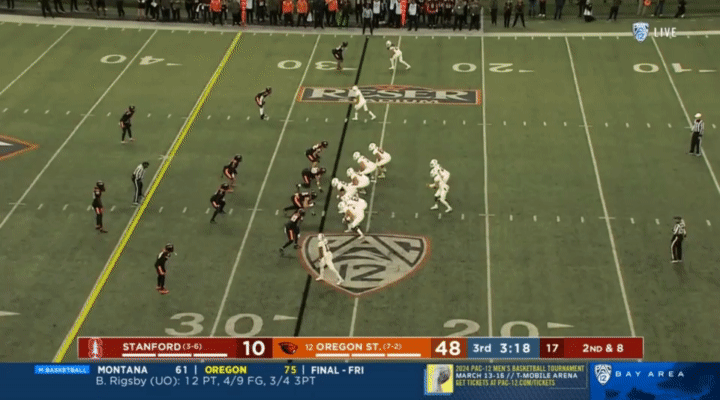
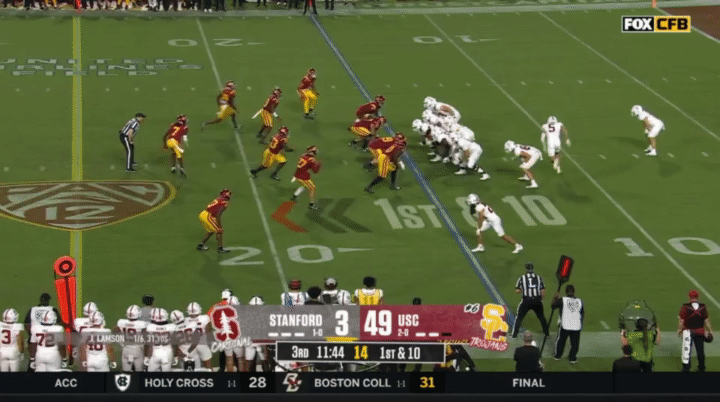
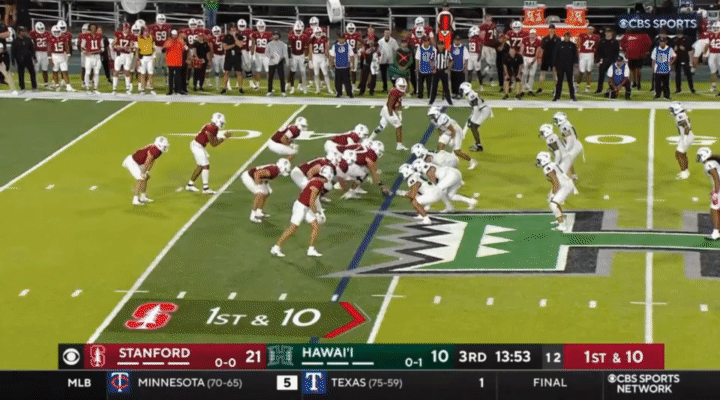
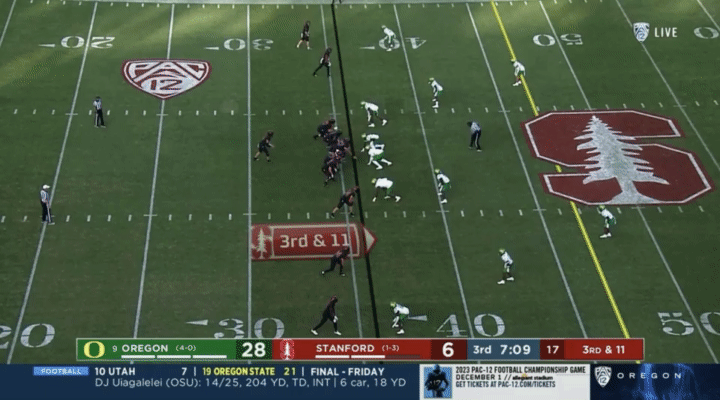
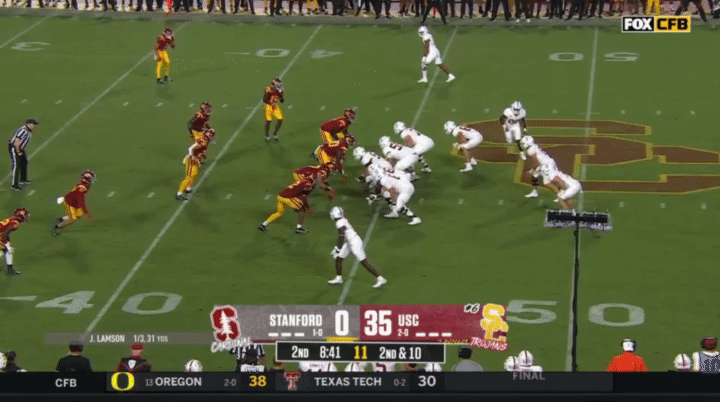


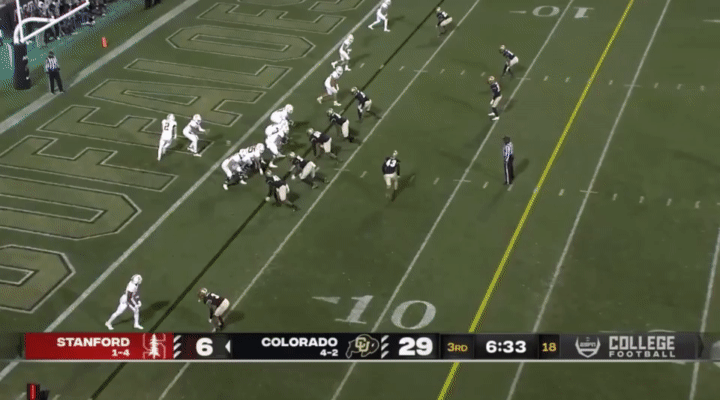
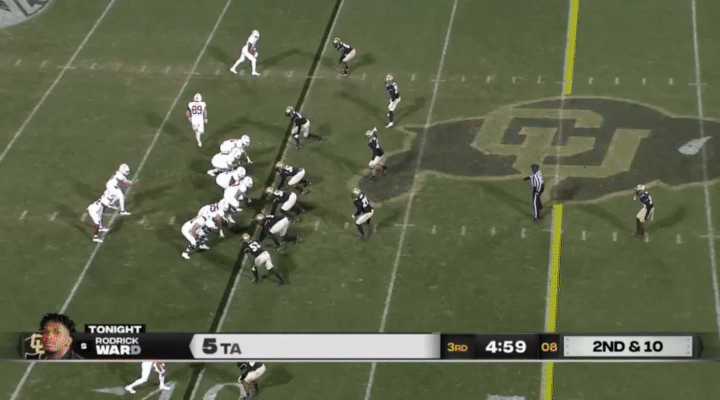
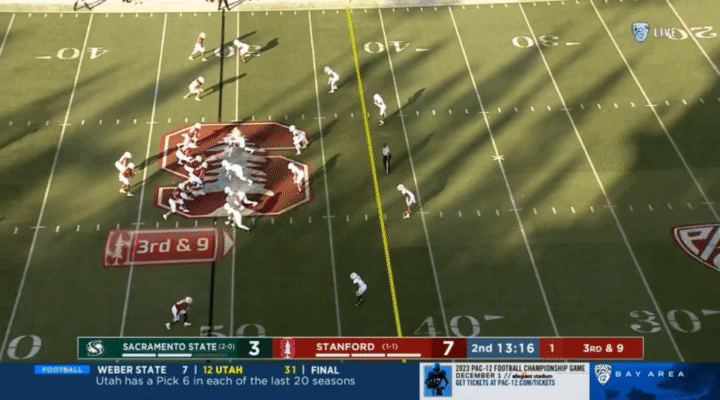



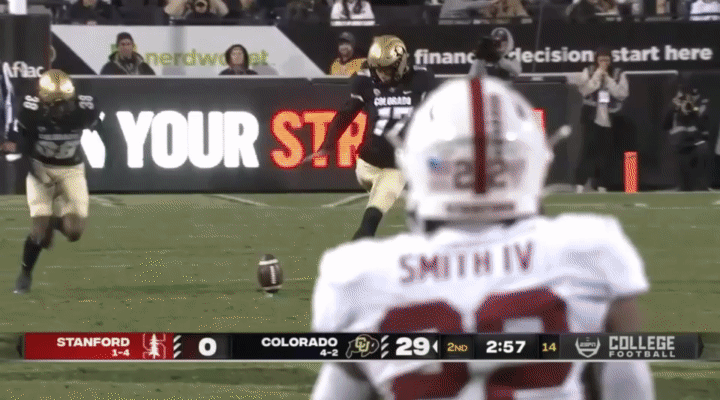
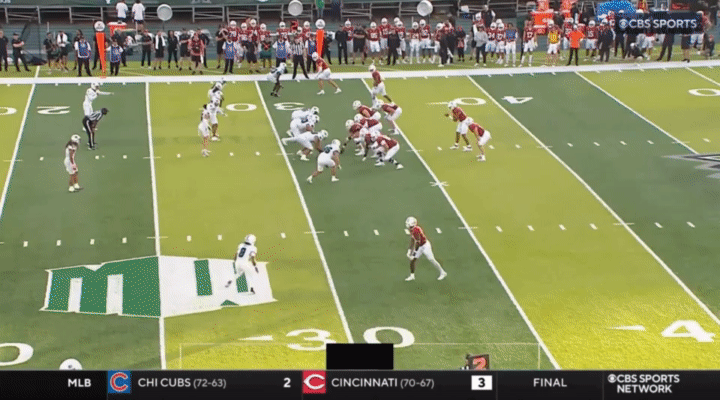

That lede image is exquisite
Thanks as always Christopher.
Unrelated: Saturday was a great day when we could celebrate a Cal win, and losses by furd, USC, and UCLA. I was curious, and went back through 1925 (first UCLA records available), looking for how many times this happened in four separate conference games on the same day. The answer? Never. Last week, November 11, 2023, was the first time it ever happened.